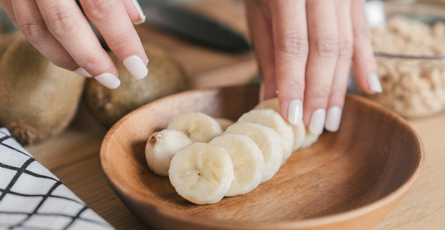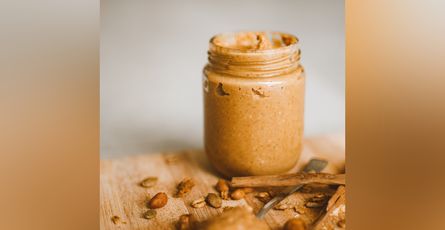Can Smoothies Replace Breakfast? Pros and Cons to Consider
-
 Sofia Cruz
Sofia Cruz
- 4 April 2023

Smoothies have become a popular breakfast option for those who are always on the go or want to start their day with a healthy meal. But can a smoothie really replace a traditional breakfast? While smoothies can be a convenient and nutritious option, it’s important to consider the ingredients and nutritional value of your smoothie.
Replacing breakfast with a smoothie can be a good option if you’re looking to increase your fruit and vegetable intake, but it’s important to make sure your smoothie contains enough protein and healthy fats to keep you full and satisfied until your next meal. Smoothies that are high in sugar and low in protein can cause a spike in blood sugar levels and leave you feeling hungry shortly after.
Additionally, it’s important to consider your individual nutritional needs and goals when deciding whether or not to replace your breakfast with a smoothie. While smoothies can be a healthy option for some, others may need a more substantial breakfast to fuel their day. Ultimately, the decision to replace your breakfast with a smoothie should be based on your individual needs and preferences.
Benefits of Smoothies as Breakfast
Replacing your regular breakfast with a smoothie can provide several benefits that can help you maintain a healthy lifestyle. Here are some of the benefits:
- Convenient: Smoothies are easy to prepare and can be consumed on the go. You can make them in advance and store them in the fridge for a quick and healthy breakfast option.
- Healthy: Smoothies can be packed with essential nutrients such as vitamins, minerals, fiber, and protein, depending on the ingredients used. You can add fruits, vegetables, nuts, seeds, and other superfoods to your smoothie to make it a nutritional powerhouse.
- Weight Loss: Smoothies can be an effective way to lose weight as they are low in calories and can keep you feeling full for longer. They can also help to reduce cravings and prevent overeating.
- Versatile: Smoothies are incredibly versatile and can be customized to suit your taste preferences. You can experiment with different ingredients and flavors to create a smoothie that you love.
- Hydrating: Smoothies can help to keep you hydrated as they are made with water or other liquids such as almond milk or coconut water.
However, it is important to note that not all smoothies are created equal. Some smoothies can be high in sugar and calories, depending on the ingredients used. It is recommended to choose whole, nutrient-dense ingredients and limit the amount of added sugars and sweeteners.
Overall, replacing your breakfast with a smoothie can be a healthy and convenient option, but it is important to choose the right ingredients and ensure that your smoothie is well-balanced and nutritious.
Potential Drawbacks of Replacing Breakfast with Smoothies
While there are several benefits to replacing breakfast with smoothies, there are also potential drawbacks to consider:
- High-Calorie Content: Smoothies can be high in calories if they contain too much fruit, especially if they’re sweetened with sugar or honey. This can lead to weight gain instead of weight loss, which is often the goal of replacing breakfast with a smoothie.
- Limited Nutrient Intake: Smoothies may not provide all the essential nutrients that a balanced breakfast can offer. For example, if you only use fruit in your smoothie, you may not get enough protein, healthy fats, or fiber, which are all important for a healthy diet.
- Increased Sugar Intake: If your smoothie is made with sweetened yogurt or fruit juice, it can be high in sugar. This can lead to a spike in blood sugar levels and a subsequent crash, leaving you feeling hungry and tired later in the day.
- Lack of Satiety: Drinking a smoothie may not provide the same level of satiety as eating a solid breakfast. Chewing food and feeling full can help regulate appetite and prevent overeating later in the day.
It’s important to note that these potential drawbacks can be mitigated by making smart choices when creating your smoothie. For example, using unsweetened almond milk instead of fruit juice can reduce sugar intake, while adding spinach or kale can increase nutrient content.
How to Make a Nutritious Smoothie Breakfast
Making a smoothie for breakfast is a great way to start your day with a nutritious and filling meal. Follow these tips to create a smoothie that will keep you energized and satisfied until your next meal:
- Start with a liquid base, such as almond milk, coconut water, or yogurt. This will give your smoothie a creamy texture and help it blend smoothly.
- Add a variety of fruits and vegetables to your smoothie. Berries, bananas, spinach, and kale are all great options. This will add flavor, fiber, and important nutrients to your smoothie.
- Include a source of protein, such as Greek yogurt, protein powder, or nut butter. This will help keep you full and satisfied until your next meal.
- Add healthy fats, such as avocado or flaxseed, to give your smoothie a boost of nutrition and help you feel full.
- Consider adding extras, such as chia seeds, cinnamon, or ginger, for added flavor and health benefits.
When making a smoothie, it’s important to pay attention to portion sizes and calorie content. While smoothies can be a healthy and filling breakfast option, they can also be high in calories and sugar if not made carefully. Be mindful of the ingredients you are using and try to keep your smoothie balanced and nutritious.
With these tips, you can create a delicious and nutritious smoothie breakfast that will keep you fueled and satisfied throughout your day.
Conclusion
Smoothies can be a healthy and convenient option for breakfast, but it’s important to ensure that they are well-balanced and contain a variety of nutrients. Replacing one meal a day with a smoothie can be a great way to incorporate more fruits and vegetables into your diet and provide your body with essential vitamins and minerals.
However, it’s important to note that smoothies should not be used as a replacement for all meals or as a crash diet. A balanced diet that includes a variety of whole foods is still the best way to maintain overall health and well-being.
When making smoothies, it’s important to pay attention to the ingredients and portion sizes. Adding too much sugar or high-calorie ingredients can negate the health benefits of the smoothie. Consider using natural sweeteners like honey or dates and incorporating healthy fats like avocado or nuts.
Overall, incorporating smoothies into your breakfast routine can be a great way to start your day on a healthy note. Just remember to keep them well-balanced and part of a balanced diet.


